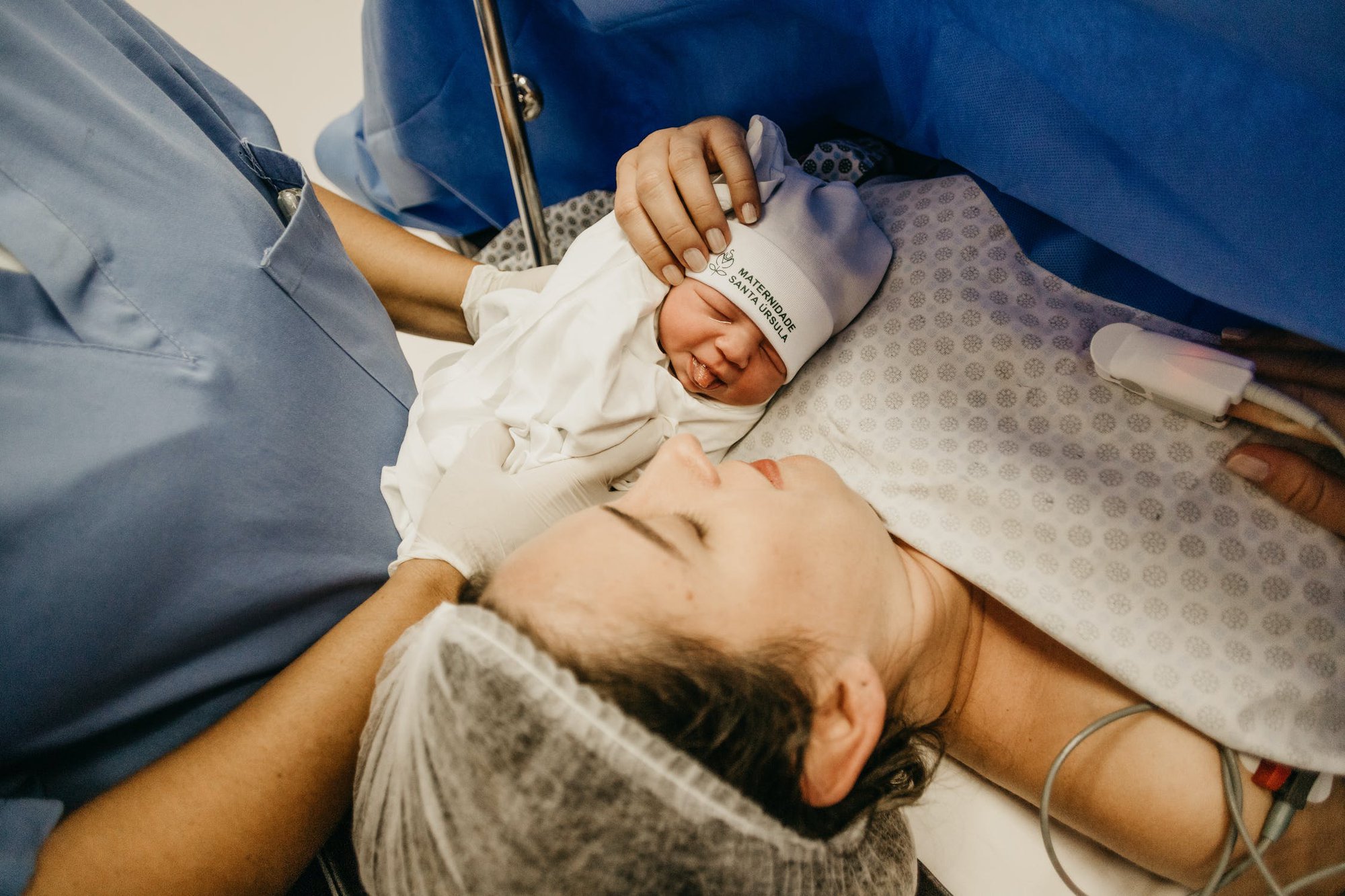Labor and Delivery Nurse Career Overview

Some aspiring nurses know right away that they want to dedicate their professional lives to bringing new life into the world. When it comes down to it, they love babies above all else, so they don’t envision themselves doing anything else but care for the little ones. Other nurses look at jobs more pragmatically. They find the idea of working with pregnant women and newborns tempting because it is a smart career choice. Some RNs may feel like it’s time to take a different direction in terms of career. Thus, they’re turning their attention to working with newborns – a rewarding career.
Regardless of what group you belong to, you are here because you want to learn more about labor and delivery nursing. As far as RN specialties go, this one fits your goals perfectly. So, naturally, you are eager to learn everything there is to know about a career as a Labor and Delivery Nurse.
If you want to learn more, you have come to the right place. This article offers a comprehensive overview of labor and delivery nursing as a potential career. From clarifying what it is exactly that L&D nurses do and what sets them apart from other types of nurses to addressing things like schooling, salary, and job outlook, you will find answers to all your Labor and Delivery-related questions in our guide.
Let’s jump right in.
What is a Labor and Delivery Nurse?
Labor and Delivery nursing, sometimes also referred to as L&D nursing, is a sub-division of Obstetrics nursing. Professionals choosing this career path work closely with physicians or Nurse-Midwives. As part of the care team attending to mother and baby during the delivery process, L&D RNs play an invaluable role. They care for the mother (and then the baby) from admission to discharge. They are present in the delivery room, caring for the childbearing woman every step of the way.
Labor and Delivery RNs will coach the mother through contractions, help her breathe when the pain seems unbearable, cheer and encourage her throughout travail. They will be the right hand of the doctor delivering the baby, assisting in any way possible. Moreover, L and D nurses will also care for the newborn immediately after birth. In some cases, they may care for both mother and baby until they are discharged.
Thus, the Labor and Delivery Nurse is a vital link in the delivery process. Their contribution and expertise make the miracle of childbirth happen. On top of that, their care and advice can help women navigate the first days of their lives as mothers with more confidence and light-heartedness.
In short, as a Labor and Delivery Nurse, you are the family’s source of information and advice. For the mother giving birth, you are a shoulder to lean on, a source of support and encouragement. You can make the birthing experience more rewarding and less painful even with the smallest gestures. Whether it’s hand-holding, giving the patient extra blankets, or helping them fight nausea – even the tiniest gestures can improve how childbirth goes. And mothers won’t forget it.

What Do Labor and Delivery Nurses Do?
The L&D job description may vary slightly depending on the institution where you work, the amount of experience you have in your field, and the level of education and training you have. But there are some common Labor and Delivery Nurse job responsibilities that you can expect to encounter if you direct your career in this direction.
Some of the duties of a Labor and Delivery Nurse include:
- Assess the needs of the patient during childbirth
- Monitor the vitals of the expecting mother. This may include checking blood pressure levels, the timing of contractions, heart rate, and more.
- Provide fetal assessments and monitoring
- Provide physical, emotional, or medicinal support (medicinal under the instructions of a physician or midwife)
- Administering epidurals if the expectant mother chooses this option
- If the birth needs to be induced, you’ll have to administer the medication and provide support
- Prepare the expectant mother for a C-section procedure if the situation requires it
- Educate the patient about medications, the delivery process, pushing, and so on.
- Provide postpartum care and advice. For example, should the new mother need a lactation consultant, you can connect her with a specialist.
- Collaborate efficiently with the whole care team: this may include physicians, Nurse Midwife, Nurse Anesthetist, Charge Nurse, Lactation Nurse.
- Chart procedures accurately and enter patient data in Electronic Health Records.
- Educate the family on how to care for the infant.
Being an L and D nurse comes with an exhaustive job description. No two days on the job are going to be the same because each pregnancy and delivery is different. Expectant mothers have different needs and different attitudes. Each birth is a special case in its own right. So, it’s crucial to be prepared for everything. You need to be able to anticipate and deal with any situation that may occur in the delivery room. That’s why you need to be well prepared for the job.
In the next section, we’ll discuss how to become a labor and delivery nurse. We’ll cover education requirements, schooling, and additional training.

How to Become a Labor and Delivery Nurse?
The most important nurse education requirement you need to fulfill in order to become a Labor and Delivery nurse is to obtain licensure as a Registered Nurse.
There are three main education routes to becoming a licensed RN. You can get an ADN degree, enroll in a diploma program, or earn a BSN in nursing. The most common ways are, by far, the ADN and BSN paths.
An Associate’s degree in nursing is the fastest way to become a Labor and Delivery Nurse. It takes around two years to complete this degree. This is a great option for nurses who need to start working as soon as possible. If at any point in your career you want to advance your education, you can do so through a bridge program. RN-to-BSN programs are common and convenient. Most of them are available online and offer a flexible schedule, making it possible to keep working while studying to get your Bachelor’s Degree. Nightingale College’s RN-to-BSN program is career-friendly and will prepare you exhaustively for a nursing career in your specialty of choice.
If you enroll in a traditional Bachelor’s Degree in Nursing, expect to spend around four years in school. BSN degrees take longer to obtain, but the benefits they come with are worth the extra schooling time. First of all, more time spent learning will help you become a better nurse. Many studies show a positive correlation between BSN RNs, better patient outcomes, fewer failure to rescue instances, and improved patient satisfaction. Likewise, a BSN degree will open the door to more and better-paid job opportunities.
At Nightingale College, prospective learners can enroll in a blended BSN program that combines online didactic instruction with on-ground experiential learning. You’ll advance your nursing skills in as little as 32 months, allowing you to start your journey towards labor and delivery nursing sooner.
Regardless of what schooling path you choose, becoming a Labor and Delivery Nurse is still a fair amount of work. The nursing education needed before embracing an L&D career will take anywhere from two to four years. If you want to advance your training, you’ll need to count in an additional two years of bedside nursing before you can apply for certification.
Becoming a Certified Labor and Delivery Nurse is entirely voluntary. However, certification is not only validation of your skills as an L&D RN. It’s also a ticket to higher wages, promotions, and better benefits.
Learn more about the advantages of becoming a certified nurse.
Some certifications that will boost your expertise level and L and D nursing prospects are Inpatient Obstetric Nursing Certification, Electronic Fetal Monitoring Certification, and Neonatal Resuscitation Certification.
For more information on all the steps of becoming a Labor and Delivery Nurse explore our guide on the subject.
Where Do Labor and Delivery Nurses Work?
Labor and Delivery Nurses can work in a variety of healthcare settings. Most L&D RNs can find employment in the delivery units of private or public hospitals, freestanding birthing centers, or private practice offices. In some cases, Labor and Delivery Nurses may need to attend home births.
No matter what work setting you are hired in, the environment will be fairly similar everywhere. Excitement, expectation, mixed in with the screaming and pain of childbirth make for a unique, loud, and enthralling workstation.

What Are the Differences Between L&D Nurses and Nurse-Midwives?
People often confuse the roles of Labor and Delivery Nurses and Nurse-Midwives or assume they are one and the same. That is not the case. While there are some similarities with these nursing roles, there are also many differences that set the professions apart.
Let’s start with the things they have in common. Both Labor and Delivery Nurses and Certified Nurse-Midwives work with expectant mothers and newborns. They care for pregnant women, attend deliveries, and offer support and education on how to care for infants.
The differences between L&D Nurses and CNMs are important to mention. Being Advanced Practice Registered Nurses, Nurse-Midwives have a far more extensive scope of practice and more autonomy. They care for women during labor, but they are involved in caring for the expectant mothers before delivery, as well. CNMs take care of the pregnant woman throughout the course of the pregnancy, which is not a responsibility shared by Labor and Delivery Nurses. Nurse-Midwives can also offer preconception counseling, prescribe medications, and perform routine gynecological examinations.
For most Certified Nurse Midwives, working in Labor and Delivery is the first step in their career. They gain experience in the delivery room and after a few years, go back to school, earn their Master’s Degree (which is a requirement for becoming an APRN), and start working as a CNM.
How Much Do Labor and Delivery Nurses Make?
A career in labor and delivery nursing is rewarding. You get to do what you love, you help bring life into the world, and day-in and day-out, you put smiles on your patients’ faces. But as significant as job satisfaction and professional fulfillment are, they don’t pay the bills. That’s why before starting a job you also ask: how much do labor and delivery nurses make?
According to data from the online job board platform, ZipRecruiter, Labor and Delivery Nurses make annually around $99,040. That is a higher salary compared to the wages all Registered Nurses earn. Per the Bureau of Labor Statistics, the average salary of RNs is $80,010.
The L&D nurse salary will be influenced by more factors that range from location and employer to schooling, qualifications, and certifications.

What Is the Job Outlook for the Profession?
In addition to earning higher-than-average salaries, Labor and Delivery Nurses also enjoy excellent job prospects. This job will always be in demand, so L&D Nurses can feel pretty confident in their job’s security. There were over 3,6 million births in the United States in 2020 and Labor and Delivery Nurses play an essential role in a big part of them. With more babies being born and mothers in need of care, the L&D role will not lose weight any time soon.
What Skills Do L&D Nurses Need?
Now that you’ve gone through the logistic aspects of the job, one question remains: Do I have what it takes? There are some skills you must command to be a successful Labor and Delivery Nurse.
Excellent communication skills are definitely at the top of the list. You need to communicate clearly with the pregnant woman from the moment she enters through the hospital doors until she is discharged. You need to listen carefully to her needs, coach her through the labor process, encourage, and support her as she delivers the baby. You also ought to communicate successfully with family members who are ready to meet the newborn for the very first time. And, of course, you work as a part of the team, so you are expected to communicate clearly with nurses, doctors, and other medical professionals.
Being calm and composed is also a game-changer for L&D nurses. The delivery ward is a dynamic work environment, with many people moving in and out, with mothers experiencing contractions, family members waiting to hear any news, nurses running around. Everything moves at a rapid pace and you need to keep up. But at the same time, you need to be the rock that childbearing mothers know is there even in the midst of this storm.
You need to display emotional strength. Labor and delivery nursing is a beautiful and rewarding career, but it won’t always be all smiles and rainbows. You may encounter heartbreaking developments, pregnancies that don’t end with a crying little bundle of joy on the mother’s chest, or complications that change the entire ‘happy pregnancy’ narrative. In these moments, you need to show strength, empathy, and kindness.
You need to be a pro at managing stress. Stress is a part of any nurse’s job and, if not managed effectively, it will lead to dissatisfaction and burnout. To combat burnout, you need to learn to prioritize your health and wellbeing, not only your patients. Don’t let stress suck the joy out of a job you love so much.

Are You Ready to Embrace an L&D Career?
Nurses who love working with babies and expectant mothers will find a perfect match in labor and delivery nursing. It would be hard to find a more deeply rewarding career. If the idea of working in L&D fills your heart with excitement, take the first step today.
Enroll in Nightingale College’s BSN program or advance your education with our online RN-to-BSN degree.

